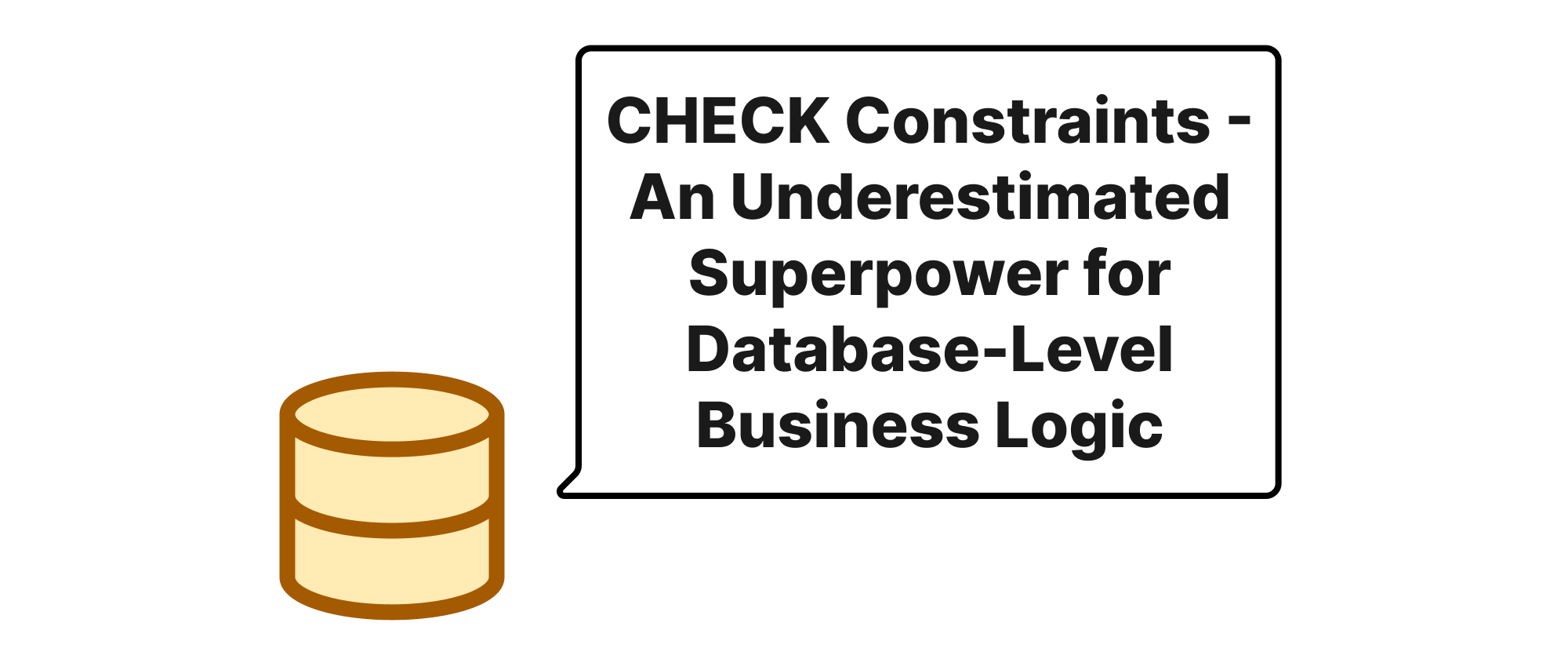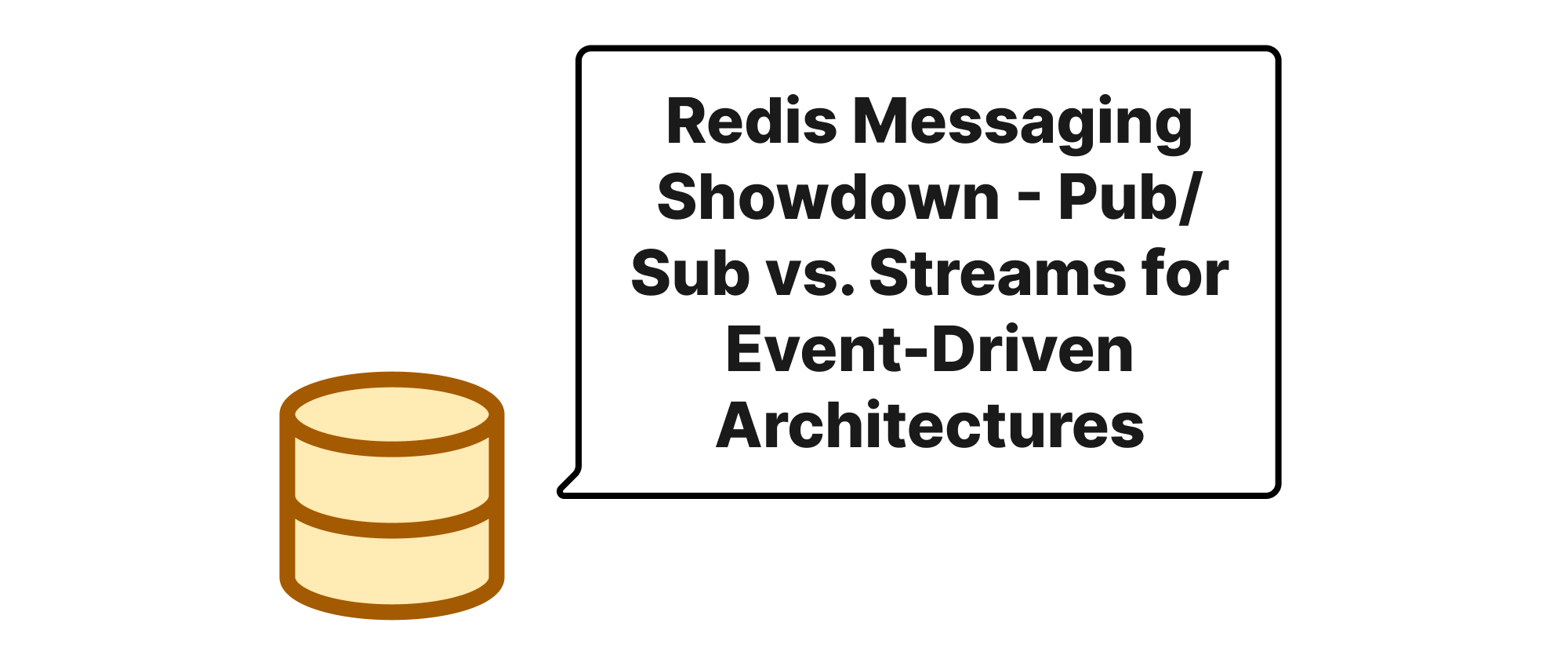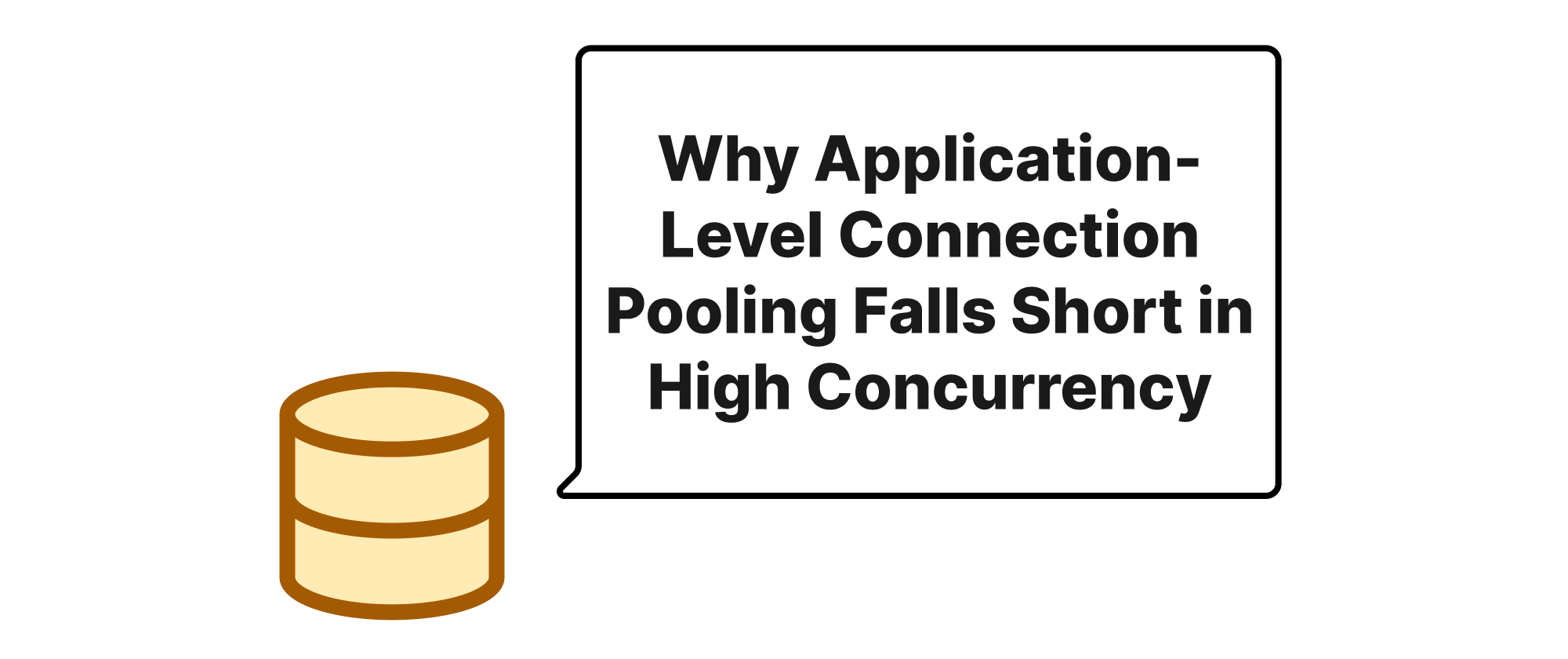CHECK Constraints - An Underestimated Superpower for Database-Level Business Logic
Daniel Hayes
Full-Stack Engineer · Leapcell

Introduction
In the intricate world of software development, ensuring data integrity and adherence to business rules is paramount. Often, developers rely heavily on application-layer validation to uphold these crucial invariants. While application-level checks are undeniably important, they reside one layer removed from the data's ultimate storage. This reliance can lead to inconsistencies, especially in systems with multiple clients, ad-hoc data modifications, or evolving application logic. What if we could imbue our databases with an independent, robust mechanism to guarantee data validity, regardless of the application's state? This is precisely where SQL's CHECK constraints come into play. Often overlooked or underestimated, CHECK constraints offer a powerful, declarative way to enforce business logic directly at the database level, serving as a silent guardian for your data's correctness. This article will delve into the utility of CHECK constraints, demonstrating how they provide an invaluable layer of defense against invalid data, enhancing robustness and simplifying application code.
The Core Concept of CHECK Constraints
Before we explore the practical applications, let's establish a clear understanding of the core terminology associated with our discussion.
- Data Integrity: The overall completeness, accuracy, and consistency of data. It ensures that data remains reliable and true throughout its lifecycle.
- Business Logic: The specific rules or algorithms that determine how data is created, stored, and changed, reflecting the real-world operations of an organization.
- Database Constraints: Rules enforced by the database management system (DBMS) to maintain data integrity. These include
PRIMARY KEY,FOREIGN KEY,UNIQUE,NOT NULL, andCHECKconstraints. CHECKConstraint: A type of database constraint that specifies a boolean expression that must evaluate toTRUEorUNKNOWNfor every row in a table. If the expression evaluates toFALSE, the new row or updated row is rejected.UNKNOWNtypically occurs when one of the columns involved in theCHECKexpression isNULL.
At its heart, a CHECK constraint is a declarative statement that defines a condition against which data must be validated upon insertion or update. If the condition is violated, the database transaction is rolled back, preventing the invalid data from persisting. This enforcement happens before any data modification is committed, making it a powerful "gatekeeper" for your data.
How CHECK Constraints Work
When an INSERT or UPDATE operation is performed on a table, the database system automatically evaluates all CHECK constraints defined on that table. If any constraint evaluates to FALSE for the row being modified, the operation fails, and an error is returned to the client. This ensures that only data conforming to the specified business rules can ever be stored in the table.
Implementation and Application Scenarios
Let's illustrate the power of CHECK constraints with practical examples across various scenarios.
1. Range Validation for Numerical Data
A common requirement is to ensure that numerical values fall within a specific range.
Scenario: An orders table needs to ensure that the quantity of an item is always positive and that the price is never negative.
CREATE TABLE products ( product_id INT PRIMARY KEY, product_name VARCHAR(100) NOT NULL, price DECIMAL(10, 2) ); CREATE TABLE order_items ( order_item_id INT PRIMARY KEY, order_id INT, product_id INT, quantity INT, -- Ensure quantity is positive CONSTRAINT chk_quantity_positive CHECK (quantity > 0), -- Ensure price is not negative (though it's better to enforce this on the 'products' table for direct price) -- For demonstration, let's assume specific order_item price can be adjusted CONSTRAINT chk_item_price_non_negative CHECK (price >= 0) ); -- Example: Valid insertion INSERT INTO order_items (order_item_id, order_id, product_id, quantity, price) VALUES (1, 101, 201, 5, 12.50); -- This will succeed -- Example: Invalid insertion (quantity <= 0) INSERT INTO order_items (order_item_id, order_id, product_id, quantity, price) VALUES (2, 101, 202, 0, 15.00); -- Fails with an error: "CHECK constraint 'chk_quantity_positive' violated" -- Example: Invalid insertion (price < 0) INSERT INTO order_items (order_item_id, order_id, product_id, quantity, price) VALUES (3, 101, 203, 2, -10.00); -- Fails with an error: "CHECK constraint 'chk_item_price_non_negative' violated"
2. Pattern Matching for String Data
CHECK constraints can use regular expressions (or equivalent pattern matching functions depending on the database system) to validate string formats.
Scenario: An employees table requires that email addresses follow a basic format and employee_id numbers start with "EMP-".
CREATE TABLE employees ( employee_id VARCHAR(50) PRIMARY KEY, first_name VARCHAR(50), last_name VARCHAR(50), email VARCHAR(100), -- Basic email format validation (simplified for brevity) -- Syntax varies. This example uses PostgreSQL LIKE operator. -- For more robust regex, functions like REGEXP_LIKE (Oracle), REGEXP_MATCHES (PostgreSQL) would be used. CONSTRAINT chk_email_format CHECK (email LIKE '%@%.%' AND email NOT LIKE '@%' AND email NOT LIKE '%@%@%' AND email NOT LIKE '% %'), -- Employee ID must start with 'EMP-' CONSTRAINT chk_employee_id_prefix CHECK (employee_id LIKE 'EMP-%') ); -- Example: Valid insertion INSERT INTO employees (employee_id, first_name, last_name, email) VALUES ('EMP-001', 'John', 'Doe', 'john.doe@example.com'); -- Succeeds -- Example: Invalid email format INSERT INTO employees (employee_id, first_name, last_name, email) VALUES ('EMP-002', 'Jane', 'Smith', 'jane.smith_example.com'); -- Fails with "CHECK constraint 'chk_email_format' violated" -- Example: Invalid employee ID prefix INSERT INTO employees (employee_id, first_name, last_name, email) VALUES ('EMP003', 'Peter', 'Jones', 'peter.jones@example.com'); -- Fails with "CHECK constraint 'chk_employee_id_prefix' violated"
3. Date and Time Logic
You can enforce rules based on date and time relationships.
Scenario: An events table must ensure that the end_date is always after the start_date.
CREATE TABLE events ( event_id INT PRIMARY KEY, event_name VARCHAR(255) NOT NULL, start_date DATE, end_date DATE, -- Ensure end_date is after start_date CONSTRAINT chk_event_dates CHECK (end_date >= start_date) ); -- Example: Valid insertion INSERT INTO events (event_id, event_name, start_date, end_date) VALUES (1, 'Conference 2023', '2023-10-26', '2023-10-28'); -- Succeeds -- Example: Invalid insertion (end_date before start_date) INSERT INTO events (event_id, event_name, start_date, end_date) VALUES (2, 'Meeting', '2023-11-15', '2023-11-14'); -- Fails with "CHECK constraint 'chk_event_dates' violated" -- Note: Null handling. If start_date or end_date is NULL, the CHECK constraint -- 'end_date >= start_date' evaluates to UNKNOWN, allowing the row to be inserted. -- If both must be present, add NOT NULL constraints. INSERT INTO events (event_id, event_name, start_date, end_date) VALUES (3, 'Future Event', NULL, '2024-01-01'); -- Succeeds (assuming NOT NULL not applied)
To enforce start_date and end_date must be non-null and also satisfy the CHECK condition:
CREATE TABLE events_strict ( event_id INT PRIMARY KEY, event_name VARCHAR(255) NOT NULL, start_date DATE NOT NULL, end_date DATE NOT NULL, CONSTRAINT chk_event_dates_strict CHECK (end_date >= start_date) );
4. Conditional Logic Across Multiple Columns
CHECK constraints become particularly powerful when they define relationships between multiple columns in the same row.
Scenario: A payment_transactions table needs to enforce that if the payment_method is 'Credit Card', then the card_number cannot be NULL. If payment_method is 'Bank Transfer', then account_number cannot be NULL.
CREATE TABLE payment_transactions ( transaction_id INT PRIMARY KEY, amount DECIMAL(10, 2) NOT NULL, payment_method VARCHAR(50) NOT NULL, -- e.g., 'Credit Card', 'Bank Transfer', 'Cash' card_number VARCHAR(16), account_number VARCHAR(20), CONSTRAINT chk_payment_details CHECK ( (payment_method = 'Credit Card' AND card_number IS NOT NULL AND account_number IS NULL) OR (payment_method = 'Bank Transfer' AND account_number IS NOT NULL AND card_number IS NULL) OR (payment_method = 'Cash' AND card_number IS NULL AND account_number IS NULL) ) ); -- Example: Valid 'Credit Card' payment INSERT INTO payment_transactions (transaction_id, amount, payment_method, card_number, account_number) VALUES (101, 50.00, 'Credit Card', '1234567890123456', NULL); -- Succeeds -- Example: Valid 'Bank Transfer' payment INSERT INTO payment_transactions (transaction_id, amount, payment_method, card_number, account_number) VALUES (102, 120.00, 'Bank Transfer', NULL, 'BG789012345678'); -- Succeeds -- Example: Valid 'Cash' payment INSERT INTO payment_transactions (transaction_id, amount, payment_method, card_number, account_number) VALUES (103, 25.00, 'Cash', NULL, NULL); -- Succeeds -- Example: Invalid 'Credit Card' payment (missing card_number) INSERT INTO payment_transactions (transaction_id, amount, payment_method, card_number, account_number) VALUES (104, 75.00, 'Credit Card', NULL, NULL); -- Fails with "CHECK constraint 'chk_payment_details' violated" -- Example: Invalid 'Bank Transfer' payment (missing account_number) INSERT INTO payment_transactions (transaction_id, amount, payment_method, card_number, account_number) VALUES (105, 90.00, 'Bank Transfer', NULL, NULL); -- Fails with "CHECK constraint 'chk_payment_details' violated" -- Example: Invalid payment (unexpected combination) INSERT INTO payment_transactions (transaction_id, amount, payment_method, card_number, account_number) VALUES (106, 30.00, 'Credit Card', NULL, 'SomeAccount'); -- Fails with "CHECK constraint 'chk_payment_details' violated"
Advantages of Using CHECK Constraints
- Guaranteed Data Integrity: Business rules are enforced at the most fundamental level, directly in the database. This prevents invalid data from ever being stored, regardless of the application's correctness or origin of the modification (e.g., direct SQL queries, different applications, migration scripts).
- Reduced Application Code Complexity: Moving validation logic from the application layer to the database layer can significantly simplify application code. Developers no longer need to duplicate intricate validation logic in every client or API endpoint.
- Consistency Across Applications: Even if multiple applications or services interact with the same database, they will all implicitly adhere to the same data validation rules defined by the
CHECKconstraints. - Improved Performance (potentially): While adding constraints incurs some overhead, native database checks are often highly optimized. More importantly, preventing invalid data from being written reduces the need for complex clean-up operations or error handling later.
- Self-Documenting Schema:
CHECKconstraints explicitly declare business rules within the database schema itself, making the database design more understandable and maintainable.
Considerations and Limitations
- Complexity: Overly complex
CHECKexpressions can be hard to read, maintain, and debug. Strive for clarity. - Performance Overhead: While generally efficient, extremely complex
CHECKconstraints that involve many columns or expensive functions can introduce noticeable overhead onINSERTandUPDATEoperations. - Cross-Row / Cross-Table Validation:
CHECKconstraints operate on a single row. They cannot directly enforce rules that depend on data in other rows of the same table or in other tables. For such scenarios, triggers, stored procedures, or more advanced database features like user-defined functions combined withCHECKconstraints (in some DBMS) might be necessary. - Error Messages: Database-generated error messages for constraint violations can sometimes be generic. You might need to map these to more user-friendly messages at the application layer.
- Database-Specific Syntax: While the concept is standard SQL, the exact syntax for advanced features (like regular expressions or custom functions within
CHECKconstraints) can vary slightly between different database systems (e.g., PostgreSQL, MySQL, SQL Server, Oracle).
Conclusion
CHECK constraints are an incredibly powerful and often underutilized feature in SQL databases. By moving critical business logic from the application layer to the database, they provide an unyielding last line of defense for data integrity, fostering consistency, simplifying application development, and making your database schema robustly self-validating. Embrace CHECK constraints to elevate your database design and ensure the unwavering correctness of your data.


